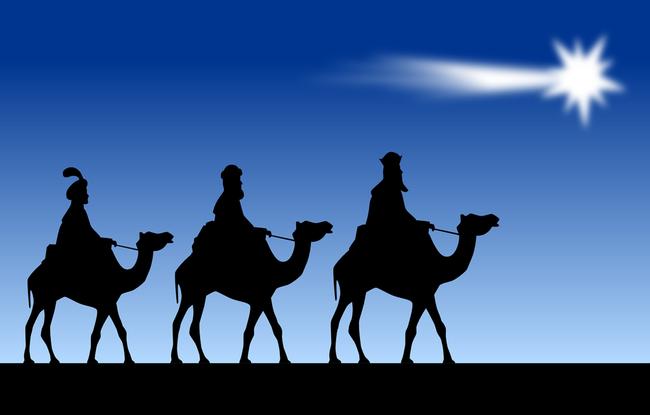[gallery ids="1010592,1010593,1010589,1010590,1010591"]
This January 6th we celebrate the arrival of the Three Wise Men in Mexico. These three characters have been part of our history and have undoubtedly become a tradition, since breaking the bagel and finding the famous "little doll" simulating the Child God is a reason for coexistence and joy. Here we leave you eight facts about the true history of the wise men and their origin.
1. Who are the Magi?
According to the biblical texts, specifically in the Gospel of Saint Matthew, it refers to the fact that some wise men went to see the birth of Jesus to give him gifts, but does not specify how many were not even kings. It is even said that there could be two or up to 70 people who went to see the son of God and it was generalized that there were three due to the number of gifts they delivered: gold, incense and myrrh.
It is believed that the three Wise Men came from different continents, Africa, Asia and Europe, although it is most likely that their point of origin was Persia, today Iran.
You might be interested in: History and meaning of the Rosca de Reyes and its elements
2. When do the Three Wise Men arrive in 2022?
In Mexico and other countries they receive the Three Wise Men on January 6. This day is known by the Catholic Church as the Feast of the Epiphany and celebrates the biblical story of the arrival of the Magi from the East to visit the baby Jesus in Bethlehem.

In our country, since the middle of the 20th century, children write a letter asking for gifts for the good behavior they had throughout the year and according to history, the Three Wise Men make their appearance on the night of the 5th and in the early hours on January 6 to leave gifts "by magic" next to the shoes of the little ones.
3. Were they real wizards?
No. According to Kristin Swenson, a professor of religious studies at the University of Virginia:
“They are called magi in Greek, which was a term referring to a sort of underclass of Persian priests. But they have come to be known as wise men. His orientation was much more in what today we could identify with science”
4. What were the names of the Magi?
Matthew doesn't say it and neither do the apocryphal gospels. It seems that the first documentation of the three names is a mosaic from the basilica of San Apollinaris el Nuevo, in the Italian city of Ravenna, although some scholars had attributed the fixation of these names to the Venerable Bede.
5. The Fourth Wizard King
According to the book "Artaban. The Fourth Wizard King" by Adrián Sosa Nuez, he was a renowned alchemist who lived in the city of Asur in the ancient empire of Persia, part of the what we now know as Iran.
She was carrying precious jewels as an offering, however, as she followed the star of Bethlehem, she met people in need and decided to help them and donate everything she was carrying for the child God. These good deeds delayed him and made him not arrive in time for the birth of Jesus, because when he arrived at the place, Mary and Joseph had already left to save themselves from Herod's army.
6. What gifts did the Magi bring?
The gifts that the Magi brought to Jesus have a particular meaning: gold alludes to kings; the incense alluded to his divinity, but it is also an aroma that refers to death; and myrrh is a resin used to embalm corpses, which signifies the mortality of men.
Because of these last two, the visit of the soothsayers came to be considered by some as a bad omen since they predicted the death of Jesus.
7. Herod's true intention
Herod (king of Judea and Galilee) met with the Magi to tell them that, when they find the son of God, they should inform him so that he too could go to adore him; the story says that Herod considered Jesus as a threat to his power so he wanted to kill him.
A few days before arriving in Bethlehem, the three kings had a dream showing Herod's true intentions. Upon arriving with the newborn, they decided not to give any indication of his whereabouts; For this reason, the king of Judea ordered the killing of all children under two years of age in and around Bethlehem.
8. Sanctuary of the Three Kings in Mexico
In Tizimín, Yucatán, is the second most important place in the world dedicated to these three characters where every January 6 pilgrims from different parts of the state gather. The most important international sanctuary is in Cologne, Germany, where the Three Wise Men are said to be buried.




